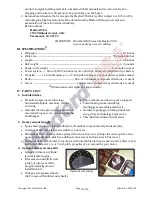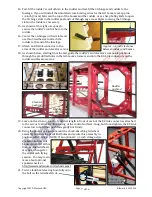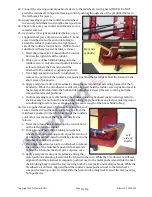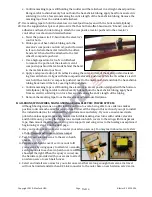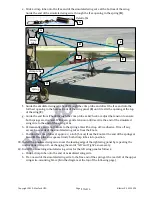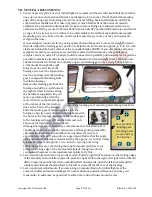
Copyright 2013: Maxford USA
Page
Blériot XI: S130926
B
B
l
l
é
é
r
r
i
i
o
o
t
t
X
X
I
I
1/6 SPORT-SCALE ARF R/C MODEL AIRPLANE
I
I
N
N
S
S
T
T
R
R
U
U
C
C
T
T
I
I
O
O
N
N
M
M
A
A
N
N
U
U
A
A
L
L
On July 25, 1909, French aviator, inventor and engineer Louis Charles Joseph Blériot (pictured at
below center) made the first flight across the English Channel in a heavier-than-air aircraft, a Blériot XI.
This historic achievement not only won Blériot a lasting place in history but assured the future of his
aircraft manufacturing business. The Blériot XI was eventually sold with various wingspans and as
single- and two-seat versions, marketed as trainers, sport/touring, military, and racing/exhibition
aircraft with several different types of engine, including the famous Anzani 3-cylinder fan (or semi-
radial) engine. Like its predecessor, it was a tractor-configuration monoplane, with a partially covered
box-girder fuselage built from ash with wire cross bracing.
Harriet Quimby (pictured at above right) was America’s first licensed woman pilot. In 1912 she flew
a Blériot XI from England to France across the English Channel. The first Blériot XIs entered military
service in Italy and France in 1910, and a year later, some of those were used in action by Italy in North
Africa – the first use of an aircraft in a war – and in Mexico. The Royal Flying Corps received its first
Blériots in 1912. During the early stages of the First World War, eight French, six British and six Italian
squadrons operated various military versions of the aircraft, mainly in observation duties, but also as
trainers, and in the case of single-seaters, as light bombers with a bomb load of up to 25 kilograms, just
over 55 pounds in traditional American units.
The above photo shows an optional U35425 motor, propeller,
dummy engine and simulated vintage-style spoked wheels.
1
of 16




